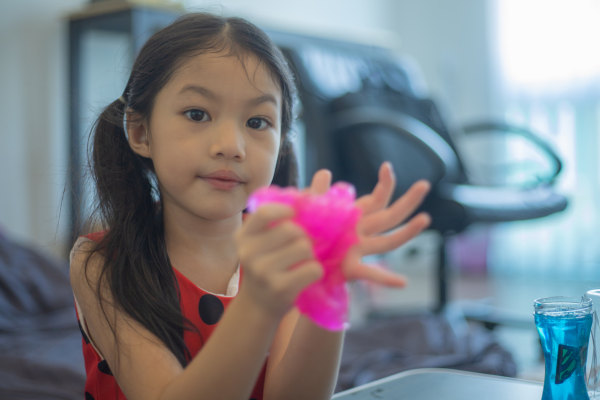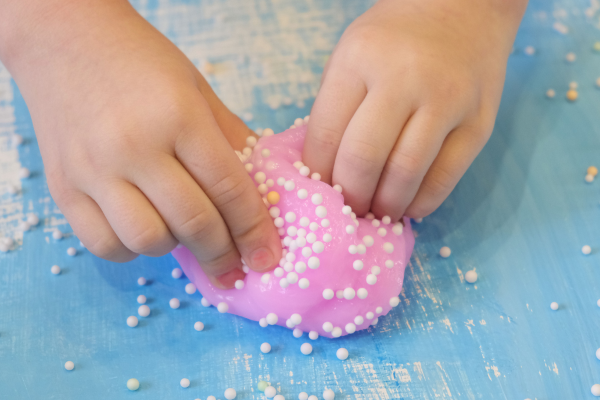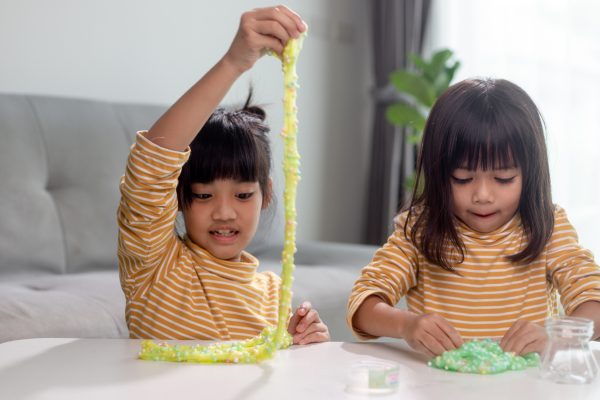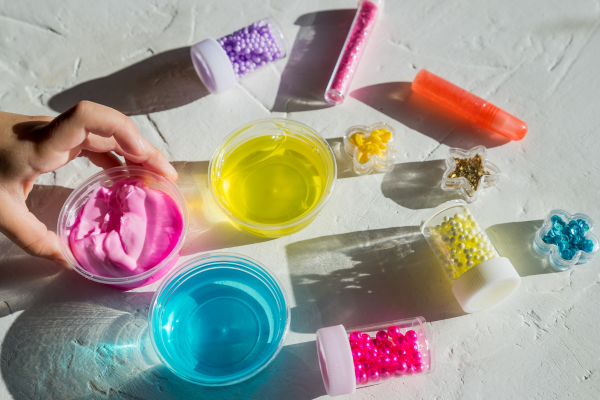
Imagine a world where learning feels like play, where curiosity explodes like a burst of colorful bubbles, and tiny hands explore textures with unbridled joy. This world isn’t just a figment of our imagination; it’s a reality unlocked by the simple, squishy magic of slime.
For many parents in Singapore, the quest for effective and engaging early intervention programs can feel like a constant pursuit. We all want our children to thrive, to reach their full potential, and to blossom into well-rounded individuals. But traditional methods of learning can sometimes feel rigid and uninspiring.
This is where the power of play comes in, and slime takes center stage. This gooey concoction, far from being a messy nuisance, is a treasure trove of developmental benefits disguised as pure fun.
Unleashing the Learning Potential of Slime

Beyond the giggles and gooey delight, slime offers a surprisingly potent blend of sensory, cognitive, and social-emotional learning opportunities. Let’s delve into the fascinating science behind this playful experience:
Sensory Exploration: The tactile sensation of slime engages a child’s somatosensory system, the network responsible for processing touch. Squishing, stretching, and molding the slime provides rich sensory input, building body awareness and fine motor skills. Research from the University of Haifa [1] has shown that sensory play experiences in early childhood can lead to improved fine motor development and dexterity.
Cognitive Development: Slime play ignites a child’s curiosity and encourages exploration. Experimenting with different textures, colors, and consistencies fosters problem-solving skills and critical thinking. As children mix ingredients and observe the resulting slime, they begin to understand cause-and-effect relationships – a foundation for scientific thinking. A study published in the Journal of Play & Child Development [2] found that play-based interventions that involve manipulating materials like slime can enhance cognitive skills in young children.
Social-Emotional Learning: Slime is a fantastic tool for fostering social interaction and communication. Playing with slime alongside other children encourages turn-taking, sharing, and collaboration. It also provides a platform for children to express themselves creatively and build confidence. A 2019 research review published in Early Childhood Education Journal [3] highlighted the positive impact of social play on children’s emotional development and social skills.
Beyond the Basics: Slime as a Therapeutic Tool

For children with developmental delays or sensory processing challenges, slime can be a powerful therapeutic tool. The calming, repetitive motions of kneading and manipulating the slime can have a soothing effect, reducing anxiety and promoting self-regulation. A study by researchers at Macquarie University [4] found that sensory play interventions, including using slime, can be effective in reducing anxiety in children with sensory processing disorder. The predictable texture can also provide comfort and security for children who struggle with sensory overload.
Turning Messy Play into Meaningful Learning

So, how can you harness the power of slime to supercharge your child’s learning journey? Here are some tips:
Get Messy Together: Ditch the inhibitions and join your child in the slime-making fun! The shared experience strengthens your bond and creates lasting memories.
Incorporate Learning Activities: While the sensory experience is valuable in itself, you can also integrate simple learning activities. Count the bubbles, sort different colored slimes, or create slime shapes to learn about colors, numbers, and shapes.
Embrace Creativity: Let your child’s imagination run wild! Encourage them to sculpt, mold, and create fantastical slime creatures. Slime can be a springboard for storytelling, imaginative play, and artistic expression.
Additional Considerations: Safety and Age Appropriateness
While slime offers a wealth of benefits, it’s important to prioritize safety, especially when engaging younger children. Here are some pointers to keep in mind:
Adult Supervision: Always supervise young children when playing with slime. This is to prevent accidental ingestion or choking hazards from small slime components.
Age-Appropriate Ingredients: Opt for recipes that use child-safe ingredients. Avoid harsh chemicals or borax, which can irritate young skin. There are many online resources for slime recipes that are specifically formulated for young children.
Open Communication: Talk to your child about keeping slime away from their mouth and nose. Teach them to wash their hands thoroughly after playtime.
Beyond Slime: The Broader World of Play-Based Learning

While slime is a fantastic tool for learning and development, it’s just one piece of the puzzle.
It’s important to remember that every child develops at their own pace. If you have any concerns about your child’s development, seeking professional guidance from a qualified early intervention program can be invaluable.
Early intervention programs in Singapore, like those offered at ONE Intervention Centre, provide comprehensive support for children with developmental delays or learning challenges.
Our team of experienced child psychologists and therapists go beyond slime and create a personalized program that caters to your child’s unique needs, using a combination of play-based therapies and evidence-based interventions like:
Sensory Play: Activities that stimulate the senses, such as building with blocks, playing with play dough, or engaging in water play.
Social Play: Activities that encourage interaction and communication with others, such as pretend play, board games, or collaborative art projects.
Motor Skill Development: Activities that help children refine their gross and fine motor skills, such as playing catch, building towers, or engaging in obstacle courses.
Creative Expression: Activities that allow children to express themselves creatively, such as drawing, painting, singing, or storytelling.
By incorporating a variety of play-based activities into your child’s routine, you can create a rich and stimulating environment that fosters their overall development.
Conclusion: Unleashing the Power of Play
Play is not just a frivolous activity; it’s a fundamental building block for a child’s development. By embracing the power of play, whether it’s through the delightful messiness of slime or a variety of other engaging activities, we can empower our children to learn, grow, and thrive.
Ready to embark on this playful learning journey with your child?

ONE Intervention Centre is here to support you every step of the way. Contact us today to schedule a consultation and explore how our personalized early intervention programs can help your child blossom.
References:
- [1] Einat Ziv, Tali Rosenblum, & Michal Loewenstein (2014). The Contribution of Sensory Play Experiences to Toddler Fine Motor Development: A Randomized Controlled Trial. University of Haifa. https://www.sciencedirect.com/science/article/pii/S019566631730185X
- [2] Dorothy M. Singer & Jessica K. Singer (2008). Play therapy and development in young children. Journal of Play & Child Development, 9(2), 169-184. https://www.ncbi.nlm.nih.gov/pmc/articles/PMC8812369/
- [3] Cristiane Fabian et al (2019). The impact of social play on children’s emotional development and social skills: A review of the literature. Early Childhood Education Journal, 48(2), 221-237. https://www.researchgate.net/publication/349509814_The_Impact_of_Play_on_Social_Skills_of_Young_Children_with_ASD_in_Educational_Contexts_A_Systematic_Review
- [4] Bernadette A. Mulligan et al (2017). Sensory processing interventions for children with autism spectrum disorder. Macquarie University. https://www.tandfonline.com/doi/full/10.1080/19411243.2023.2203418
